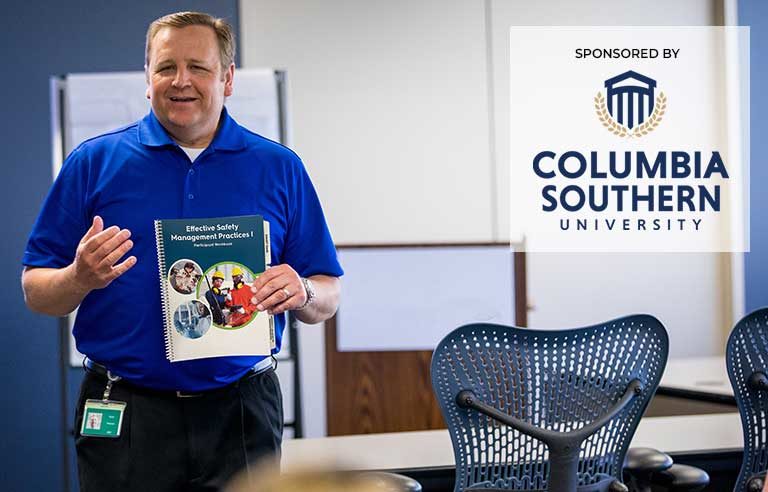2023 Training Survey

Photo: National Safety Council
Page 5 of 5
You said it
We wanted to hear from safety pros about their experiences with delivering worker training. So we asked, “What mistakes have you made regarding worker safety training? What lessons have you learned?” Here, in their own words, are some of the responses.
Mistakes made – and lessons learned
Assuming training on basic knowledge is not required. We now refresh all basics, including, for example, keeping three points of contact while using a ladder.
Assuming our processes, products and tribal knowledge is understandable. I’ve learned that not only is it important to show relatable (our own) hazards and explain them, but to explain why we do what we do to stay safe and not just regurgitate the OSHA standards and company policy.

Assuming that presenting the information is enough to change minds. People don’t always do better just because they know better. You have to understand what the source of the resistance is and work on that.
Assuming they care as much as I do and are interested (this includes some of the managers). Tell them why they need to care, and be more visible at their worksite – not just in training.
I was overzealous and moved too quickly to achieve compliance in an environment that had regressed into doing things the old way, where safety was less important than productivity. I now try to be less confrontational, acting more as an advocate than an enforcer.
I once revamped our LOTO program, and the response I got during training was discouraging. I learned to include the people directly impacted by the training in the development of the program to get their buy-in from the get-go.
When creating site-specific training, my mistake was believing that every employee looked at the facts the same way I do. I have to present facts in funny, simple ways to assist all employees’ learning ability.
Provided compliance training to a group that did not relate that to their work. It was too complicated and not relevant. I learned that I needed to convert the information into relevant training.
Providing too much information in the classroom setting. I am developing a goal to train for knowledge and behavior retention, and providing supporting information in job aids, training supplements and other resources.
Not being prepared enough for field training. The lesson was to know the subject matter better than the worker using the product.
Training was too long. Have abbreviated them more.
Too many topics. Focusing on just relevant topics now.
Bad training techniques such as reading directly off PowerPoints or reciting the information word for word. I’ve learned to be more confident in myself and to be more organic with the knowledge I’m sharing.
Going too fast. I used to rush through my trainings because of my nerves. When I stopped rushing, I noticed a difference.
Using PowerPoint only and not adding hands-on. It works better if the class can do what they are being taught.
Trying to do it yourself to save money isn’t always wise. Stay abreast of current training offerings.
We use worker trainers and sometimes we don’t pick the right person. We do more screening now of perspective trainers.
IT issues are my downfall. Lessons learned are to continue to learn about the platform to deliver a fun and exciting experience. Hopefully my sense of humor makes up for my IT struggles when they happen.
Good advice
Small stuff that we take for granted, and sometimes bypass during training, is just as important as the big compliance trainings we do for worker safety.
We’ve learned that training must be a blend of different learning styles in order to capture attention on a wide variety of generations and experience levels.
Sitting them in front of a generic training video does not work. Our employees need examples that pertain to their everyday work in their specific trade. They need to learn from someone who understands the trade and can give the “why” behind what is done. They also need the opportunity for hands-on training, or the ability to actively participate in training, whenever possible.
Don’t talk about safety being about compliance.
Everyone has different learning styles, and some can complete online self-taught while others need in person.
Keeping training sessions to 30 minutes or less is more effective.
Only give them the information that they need to know. Try to engage them in the process of the training.
Give more breaks, more often.
When refreshing topics, use a new presentation. Don’t simply use the same material from before.
Don’t assume new employees, even with experience, know safety.
I have learned the more excited I am about safety, the more people will listen.
Find out exactly what the workers are doing in the field. If work tasks are occasional, employees still need to be trained.
Don’t use trick questions – make questions clear and concise.
Ask questions to be sure you are heard.
You really need to review products (online) to determine if they are compliant. You need to audit training classes put on by external consultants, as sometimes they aren’t trained in the subject they are teaching or say the wrong things, etc.
Many have never been in the trades before. I have learned to appeal to the family dynamic. How does what you do now and in the future provide for those you care about?
I listen and learn from the people doing the work, and craft learning topics based on their “real-world” needs and regulatory compliance. Don’t read them the book – you need to make safety personal.
I’ve learned to read my audience better and adjust the training process to get more exposure. From every training you learn something new.
You always learn from any mistake you have made.
| << Return to the beginning of the article |
Sponsored by  |
Post a comment to this article
Safety+Health welcomes comments that promote respectful dialogue. Please stay on topic. Comments that contain personal attacks, profanity or abusive language – or those aggressively promoting products or services – will be removed. We reserve the right to determine which comments violate our comment policy. (Anonymous comments are welcome; merely skip the “name” field in the comment box. An email address is required but will not be included with your comment.)

